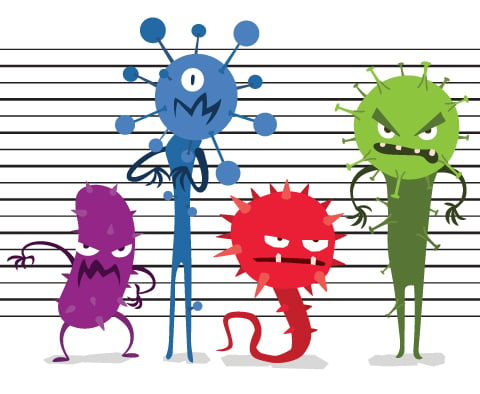Lower Respiratory Tract Infection
The lower respiratory tract includes the lungs, which is made up of the trachea (windpipe), bronchi and bronchioles (airway branches), and alveoli (air sacs). An infection in this area is usually caused by a virus but can also be caused by bacteria.
A lower respiratory tract infection can affect the airways, which happens with bronchitis, or the air sacs at the end of the airways, which happens with pneumonia. Other examples of lower respiratory tract infections include bronchiolitis, tuberculosis, and chronic obstructive pulmonary disease.
Most healthy people make a full recovery from uncomplicated lower respiratory tract infections. However, complications sometimes arise and can have long-term effects. Those most at risk for complications include people with a lung or heart disorder and people older than 65 or younger than five years old.
Lower Respiratory Tract Infection Symptoms
The main symptom of a lower respiratory tract infection is a cough, which can be severe. Other common symptoms include:
- Fever
- Wheezing
- Difficulty breathing, especially breathing quickly or in an irregular pattern
- Difficulty catching your breath
- Tightness in the chest or chest pain
MicroGenDX Tests Used to Diagnose a Lower Respiratory Tract Infection
An evaluation and culture (growing microbes from your sample in a lab) are often used to diagnose lower respiratory tract infections. However, standard cultures might come back negative even when you actually do have an infection, and that means your infection won’t be treated. A MicroGenDX test detects the DNA of all microbes in your sample along with how much of each is present and uses that information to identify causes of the infection and the drugs that can best treat it.
If a non-viral Infection is suspected you can order a Pulmonary Test Service test and get complete instructions here https://microgendx.com/product/pulmonary-test-service-dm-intl/
Providing a Sample for the MicroGenDX Lower Respiratory Tract Infection Test
Everything you need to know about how lower respiratory tract infection samples are taken is included with the Pulmonary Test Service and is also available online on the product page. The instructions included with your test kit contain illustrations that will enable you or your doctor to collect a sample without contaminating it. It is always important to obtain a proper sample by following the instructions for collecting the sample, as well as when packaging and shipping it. For example, be sure not to contaminate the sample by touching it with your hands.
For best results, drink plenty of fluids on the evening before the test unless you are on a fluid restriction. You should also obtain the sample first thing in the morning. If you can’t collect the sample before breakfast, wait at least an hour after eating before trying.
Medical Specialties that Treat a Lower Respiratory Tract Infection
A primary care healthcare provider is the first contact for treatment. The physician can recommend a specialist known as a pulmonologist if necessary.
How a Lower Respiratory Tract Infection is Treated
Some lower respiratory tract infections clear on their own without treatment or with over-the-counter medications. In some cases, a healthcare provider may recommend additional treatment. When an infection is present, the MicroGenDX test will indicate options for antibiotics or antivirals that your healthcare provider can prescribe to treat the infection. It is important to complete the full course of medication when it is prescribed, even if symptoms begin to clear up before you are finished.
References
- https://www.rileychildrens.org/health-info/lower-respiratory-tract-infection
- “Lower respiratory tract infections: What to know,” Medical News Today website, accessed 17 May 2022 from: https://www.medicalnewstoday. com/articles/323522#treatment

